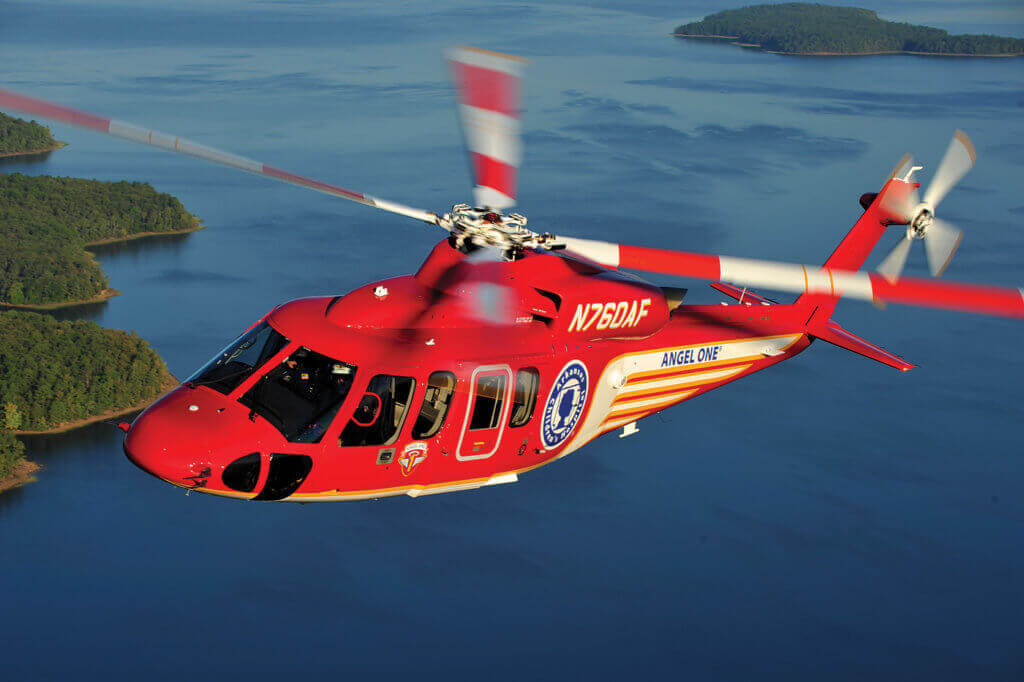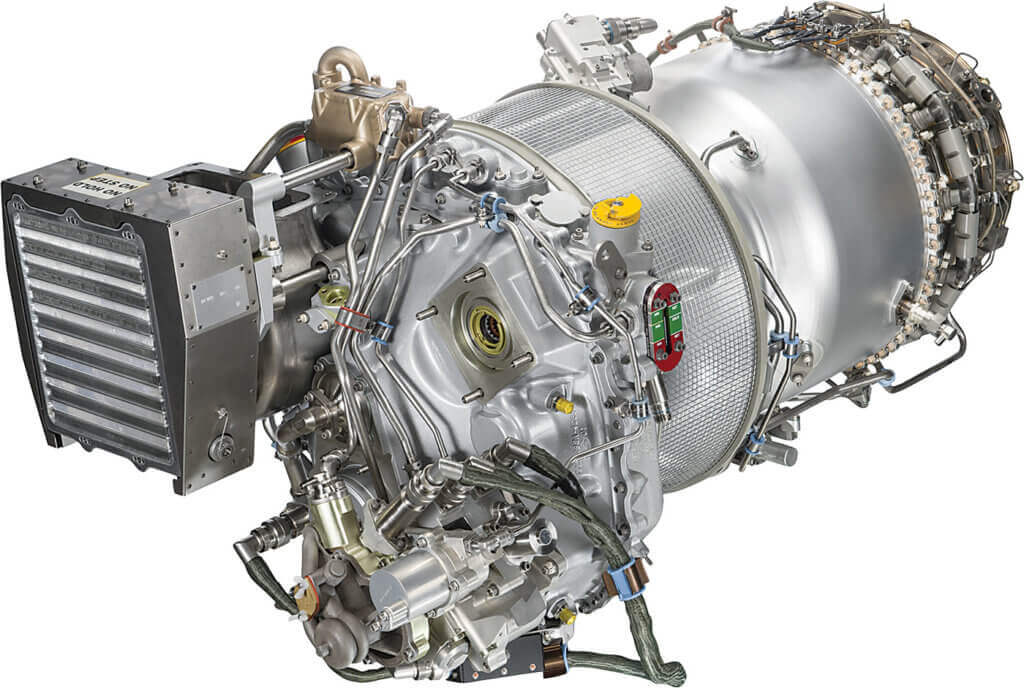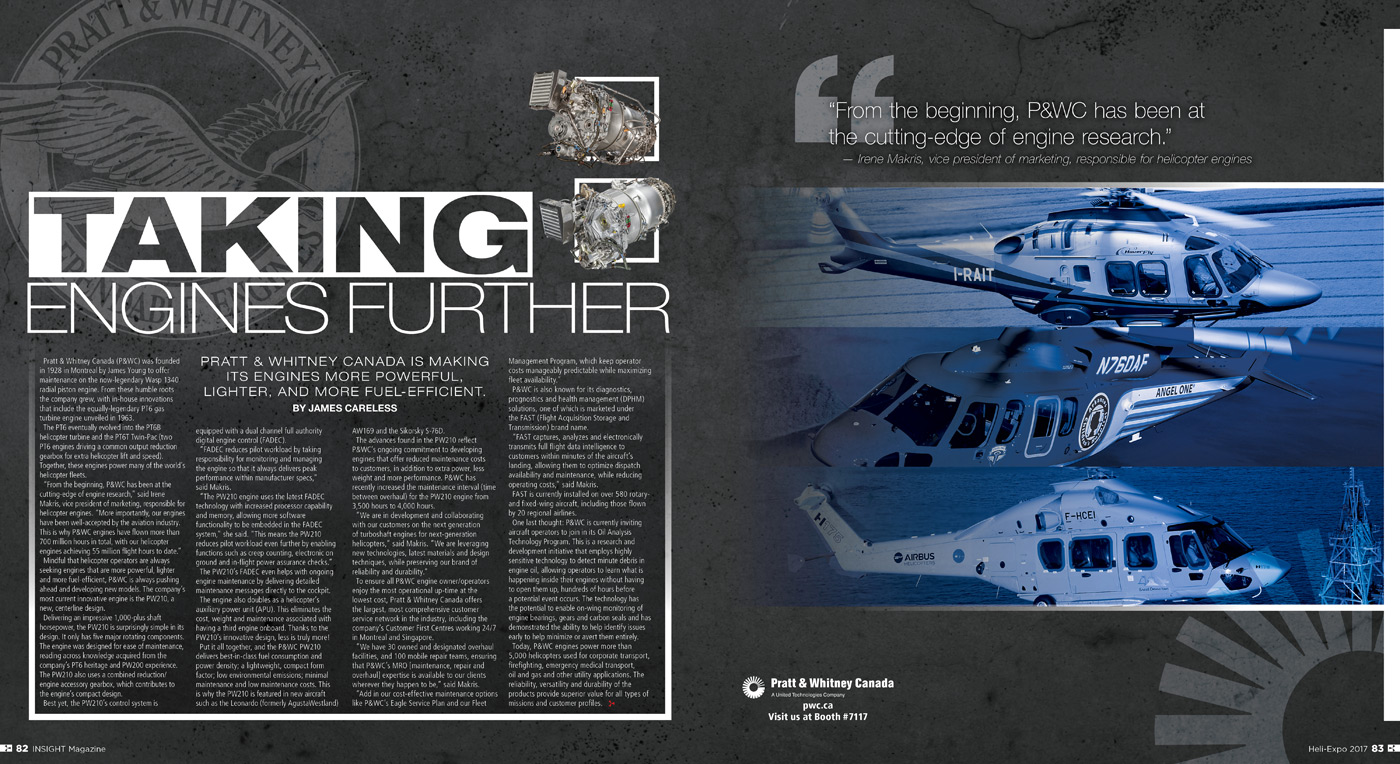Pratt & Whitney Canada (P&WC) was founded in 1928 in Montreal by James Young to offer maintenance on the now-legendary Wasp 1340 radial piston engine. From these humble roots the company grew, with in-house innovations that include the equally-legendary PT6 gas turbine engine unveiled in 1963.

The PT6 eventually evolved into the PT6B helicopter turbine and the PT6T Twin-Pac (two PT6 engines driving a common output reduction gearbox for extra helicopter lift and speed). Together, these engines power many of the world’s helicopter fleets.
“From the beginning, P&WC has been at the cutting-edge of engine research,” said Irene Makris, vice president of marketing, responsible for helicopter engines. “More importantly, our engines have been well-accepted by the aviation industry. This is why P&WC engines have flown more than 700 million hours in total, with our helicopter engines achieving 55 million flight hours to date.”
Mindful that helicopter operators are always seeking engines that are more powerful, lighter and more fuel-efficient, P&WC is always pushing ahead and developing new models. The company’s most current innovative engine is the PW210, a new, centerline design.
Delivering an impressive 1,000-plus shaft horsepower, the PW210 is surprisingly simple in its design. It only has five major rotating components. The engine was designed for ease of maintenance, reading across knowledge acquired from the company’s PT6 heritage and PW200 experience. The PW210 also uses a combined reduction/engine accessory gearbox, which contributes to the engine’s compact design.

Best yet, the PW210’s control system is equipped with a dual channel full authority digital engine control (FADEC).
“FADEC reduces pilot workload by taking responsibility for monitoring and managing the engine so that it always delivers peak performance within manufacturer specs,” said Makris.
“The PW210 engine uses the latest FADEC technology with increased processor capability and memory, allowing more software functionality to be embedded in the FADEC system,” she said. “This means the PW210 reduces pilot workload even further by enabling functions such as creep counting, electronic on ground and in-flight power assurance checks.”
The PW210’s FADEC even helps with ongoing engine maintenance by delivering detailed maintenance messages directly to the cockpit.
The engine also doubles as a helicopter’s auxiliary power unit (APU). This eliminates the cost, weight and maintenance associated with having a third engine onboard. Thanks to the PW210’s innovative design, less is truly more!

Put it all together, and the P&WC PW210 delivers best-in-class fuel consumption and power density; a lightweight, compact form factor; low environmental emissions; minimal maintenance and low maintenance costs. This is why the PW210 is featured in new aircraft such as the Leonardo (formerly AgustaWestland) AW169 and the Sikorsky S-76D.
The advances found in the PW210 reflect P&WC’s ongoing commitment to developing engines that offer reduced maintenance costs to customers, in addition to extra power, less weight and more performance. P&WC has recently increased the maintenance interval (time between overhaul) for the PW210 engine from 3,500 hours to 4,000 hours.
“We are in development and collaborating with our customers on the next generation of turboshaft engines for next-generation helicopters,” said Makris. “We are leveraging new technologies, latest materials and design techniques, while preserving our brand of reliability and durability.”
To ensure all P&WC engine owner/operators enjoy the most operational up-time at the lowest cost, Pratt & Whitney Canada offers the largest, most comprehensive customer service network in the industry, including the company’s Customer First Centres working 24/7 in Montreal and Singapore.

“We have 30 owned and designated overhaul facilities, and 100 mobile repair teams, ensuring that P&WC’s MRO [maintenance, repair and overhaul] expertise is available to our clients wherever they happen to be,” said Makris.
“Add in our cost-effective maintenance options like P&WC’s Eagle Service Plan and our Fleet Management Program, which keep operator costs manageably predictable while maximizing fleet availability.”
P&WC is also known for its diagnostics, prognostics and health management (DPHM) solutions, one of which is marketed under the FAST (Flight Acquisition Storage and Transmission) brand name.
“FAST captures, analyzes and electronically transmits full flight data intelligence to customers within minutes of the aircraft’s landing, allowing them to optimize dispatch availability and maintenance, while reducing operating costs,” said Makris.

FAST is currently installed on over 580 rotary- and fixed-wing aircraft, including those flown by 20 regional airlines.
One last thought: P&WC is currently inviting aircraft operators to join in its Oil Analysis Technology Program. This is a research and development initiative that employs highly sensitive technology to detect minute debris in engine oil, allowing operators to learn what is happening inside their engines without having to open them up, hundreds of hours before a potential event occurs. The technology has the potential to enable on-wing monitoring of engine bearings, gears and carbon seals and has demonstrated the ability to help identify issues early to help minimize or avert them entirely.
Today, P&WC engines power more than 5,000 helicopters used for corporate transport, firefighting, emergency medical transport, oil and gas and other utility applications. The reliability, versatility and durability of the products provide superior value for all types of missions and customer profiles.
If you would like to see your company featured in Insight, contact Derek Kast at derek@mhmpub.com.









